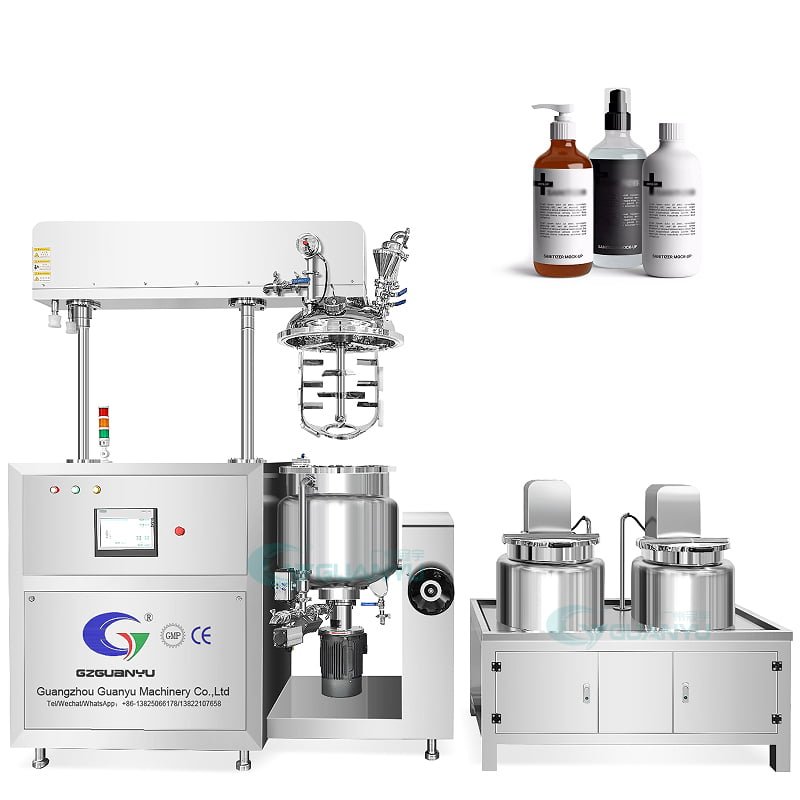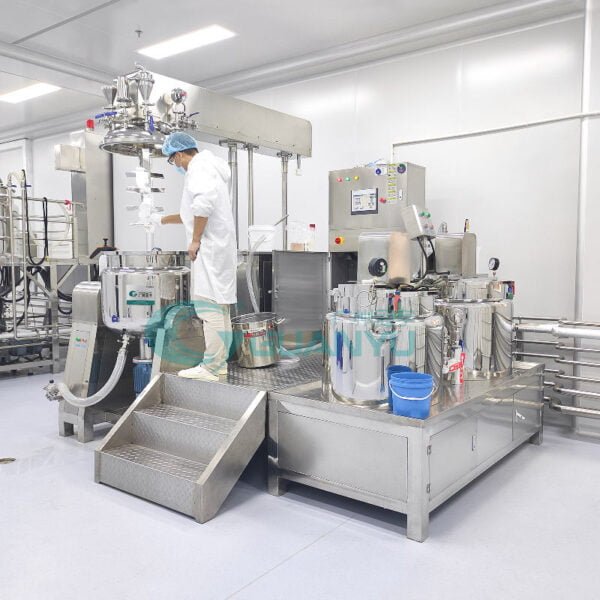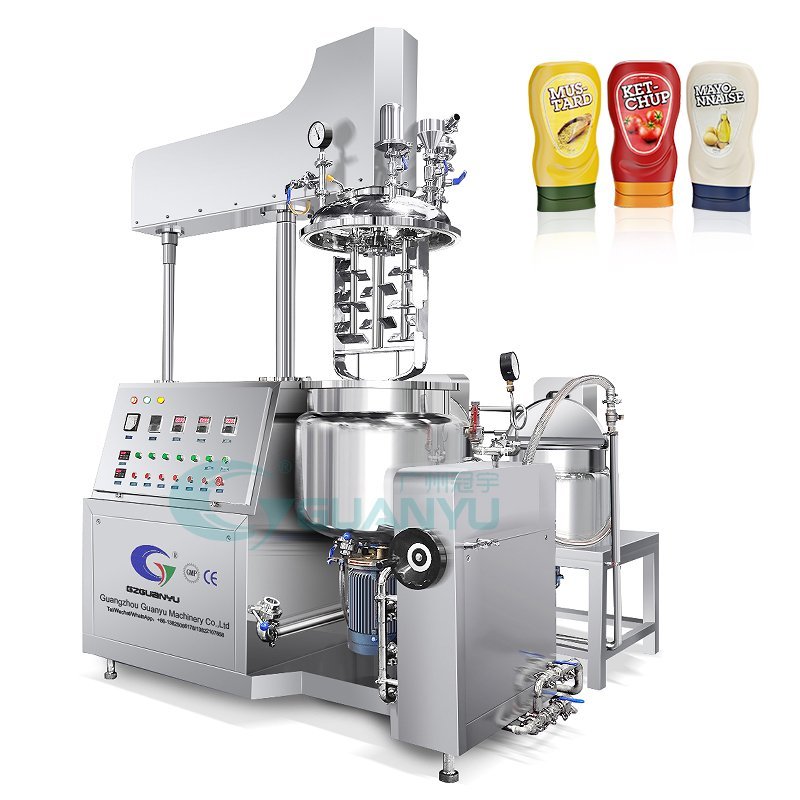
Selecting the right mayonnaise making machine shapes your product’s quality, safety, and your business’s ability to grow. You need equipment that matches your recipe and production scale. Machines designed for thick mayonnaise ensure accurate filling, airtight sealing, and secure capping, which protect freshness and meet food safety standards. Advanced options now include AI-driven automation, real-time analytics, and flexible features that adapt to new recipes or packaging. If you plan to expand, consider scalable solutions:
Business Scale | Production Capacity (kg/day) | Recommended Equipment Type |
|---|---|---|
Startup / Micro | 50–200 | Manual or Semi-Automatic |
Small/Medium Enterprise | 200–2,000 | Semi or Fully Automatic |
Commercial / Industrial | 2,000+ | Fully Automatic, High-Capacity |
Choose technology that supports your current needs and future ambitions.
Key Takeaways
Choose a mayonnaise machine that fits your recipe, batch size, and business scale to ensure quality and growth.
Consider automation levels carefully; fully automatic machines improve consistency and reduce labor costs.
Look for machines made with food-safe stainless steel and easy-to-clean designs to maintain hygiene and safety.
Select suppliers with strong support and local knowledge to reduce downtime and meet regional requirements.
Use checklists and comparison tables to evaluate machines and avoid costly mistakes when buying equipment.
Choosing a Mayonnaise Making Machine
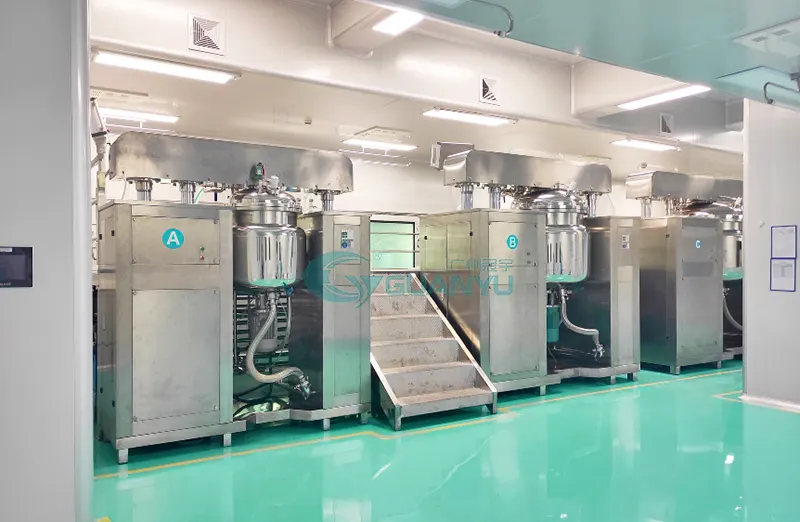
Types and Recipes
You have many options when selecting a mayonnaise making machine in 2025. Machines range from small mixers for artisanal batches to fully automatic systems for industrial production. Your choice depends on your recipe, desired texture, and packaging needs. Some machines focus on mixing and emulsifying, while others handle filling and sealing.
Machine Type | Operation Summary | Output Characteristics |
|---|---|---|
Pre-made Pouch Machine | Opens and fills pre-formed pouches, then seals using heated bars or induction sealing. | Small, portable pouches, leak-proof, convenient for travel. |
Bottle Packing Machine | Fills and seals glass or plastic bottles, allowing product visibility and durability. | Durable bottles, consumer-friendly packaging. |
Sachet Packing Machine | Forms small sachets by folding and sealing plastic/aluminum foil, filled with thick mayonnaise. | Lightweight, single-use sachets, easy to open, less waste. |
Stick Pack Machine | Slits film into strips, forms tube-like packs, fills and seals both ends. | Standard single-serving packs, sealed for freshness. |
Doypack Machine | Packs mayonnaise in stand-up pouches for convenient storage. | Stand-up pouches, easy to store and handle. |
Tube Pack Machine | Packs mayonnaise in squeezable tubes made of soft plastic or aluminum. | Measured dispensing, convenient for consumers. |
Tip: Match your mayonnaise making machine to your recipe’s viscosity and packaging style. This ensures smooth production and consistent quality.
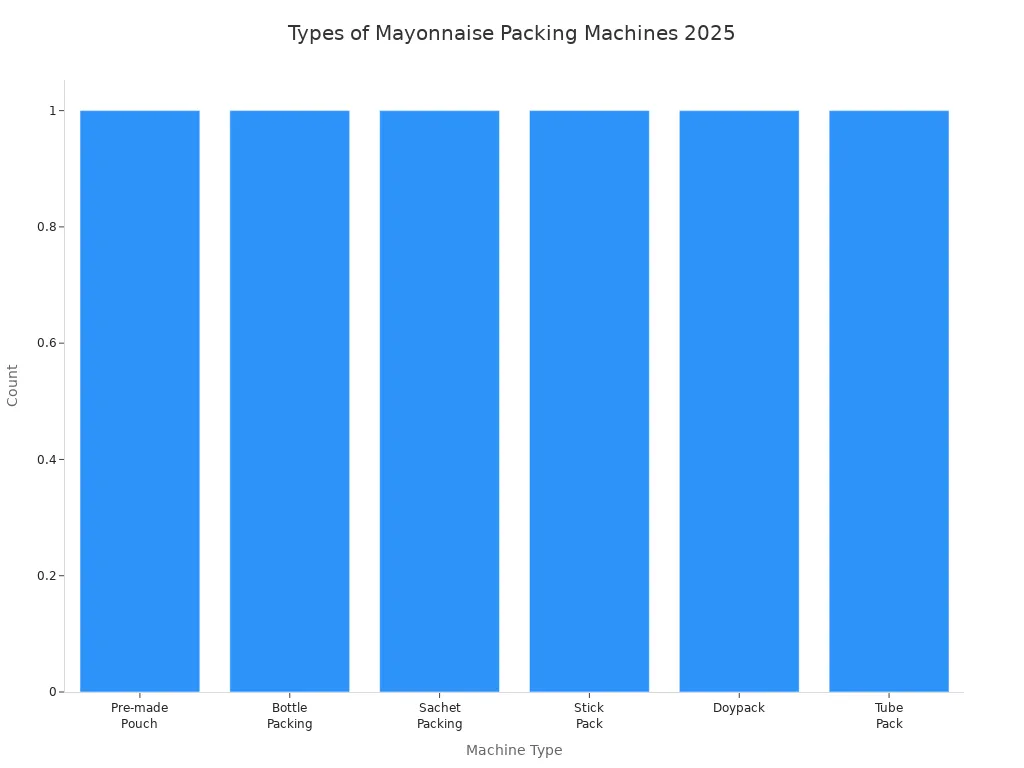
Batch Size and Scalability
Choosing the right batch size is crucial for your business. Commercial mayonnaise making machines offer capacities from 100 kg per hour for small operations to over 80,000 liters per hour for large factories. If you select a machine that is too large, you may face high costs and maintenance. If you choose one that is too small, you risk limiting your growth.
Machine Type | Typical Batch Size Range (kg/hour) | Notes on Scalability and Features |
|---|---|---|
Starter Model | 100–200 | |
Advanced Small Unit | 300–500 | Higher capacity for growing businesses; semi-automatic to automatic |
Large Industrial Machines | 500 liters/hour to 80,000 liters/hour | Supports high-volume production; fully automatic with advanced controls and cleaning systems |
High-Speed Machines | Up to 6,000 kg/hour | Designed for very large scale, fast production lines |
Many machines allow you to adjust batch sizes. This flexibility helps you scale production up or down as needed. Batch processing machines work well for startups because they are easy to use and require less capital. As your business grows, you can upgrade to larger or more automated systems without wasting resources.
Machines vary from small batch sizes for startups to large capacity for big factories.
Fast machines can produce up to 6,000 kg per hour, enabling you to meet increasing orders.
Adjustable batch sizes provide flexibility to scale production.
Automation levels range from manual/semi-automatic (small to medium scale) to fully automatic (medium to large scale), supporting different growth stages.
Note: Always consider your current demand and future expansion plans when choosing a mayonnaise making machine. Oversizing leads to wasted resources, while undersizing can hold back your business.
Automation Options
Automation plays a key role in modern mayonnaise production. You can choose between semi-automatic and fully automatic machines. Semi-automatic machines combine manual and machine operations. You may need to fill containers by hand, which increases labor needs and can affect consistency. Fully automatic machines use touchscreen controls, inline emulsifiers, and automatic filling and sealing. These features reduce manual labor and ensure consistent output.
Automation Level | Description | Impact on Labor | Impact on Consistency and Production Quality |
|---|---|---|---|
Semi-automatic | Combines manual and machine operations; uses basic mixers; filling done by hand | Requires more manual labor, especially in filling | Suitable for small batches; less consistent due to manual steps |
Fully automatic | Features touchscreen controls, inline emulsifiers, automatic filling and sealing | Significantly reduces manual labor | Ensures consistent output with precise mixing and filling; supports scalability and faster production |
Fully automatic machines provide consistent texture and batch quality by mixing ingredients properly.
They enable faster production, helping you complete large orders quickly.
Automation reduces power usage, waste, and maintenance needs.
Food-safe materials and easy cleaning improve safety and hygiene.
Tip: Investing in a fully automatic mayonnaise making machine can save you money in the long run by reducing labor costs and improving efficiency.
Key Features
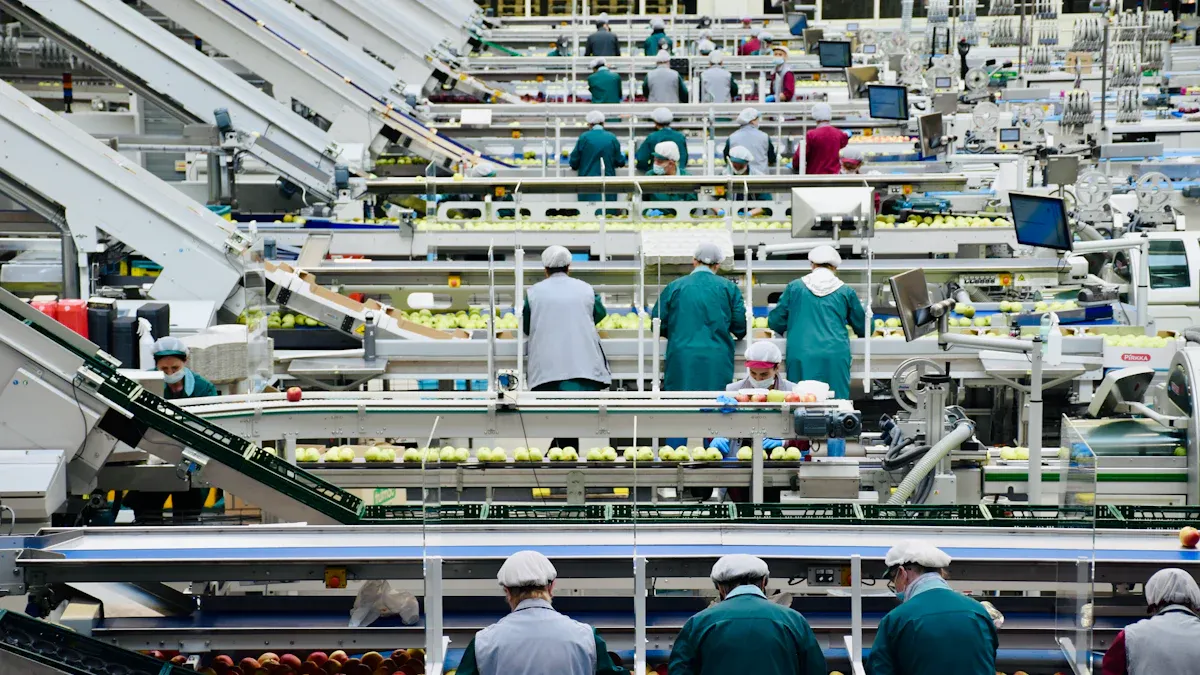
Material of Construction
When you choose a mayonnaise making machine, pay close attention to the materials used in its construction. High-quality machines use stainless steel, especially SS304 and SS316L, for all parts that touch food. These materials resist corrosion, last longer, and help keep your product safe. Mirror-polished surfaces and multi-layer designs also make cleaning easier and reduce the risk of contamination.
Component/Feature | Material Used | Effect on Durability and Food Safety |
|---|---|---|
SS304/316L (three-layer) | High corrosion resistance, longer lifespan, maintains hygiene | |
Tank body and pipes | Mirror polished SS304/316L | GMP compliance, smooth surface lowers contamination risk |
Agitator and homogenizer | SS304/316L | Durable, corrosion resistant, keeps product quality high |
Most industry-leading machines meet strict standards like CE and FDA. These certifications show that the equipment is safe, hygienic, and built to last. You may pay more upfront, but you gain reliability and fewer breakdowns over time.
Tip: Stainless steel construction is not just about looks. It protects your product and your business reputation.
Emulsification Efficiency
A mayonnaise making machine must create a stable, creamy emulsion. Several factors affect this:
The type and design of the emulsifier
Mixing speed and time
Temperature during processing
Real-time viscosity monitoring
Efficient machines use high-speed homogenizers to mix oil and water quickly, often in just 3–10 minutes. Inline sensors check viscosity as you work, so you can adjust settings and avoid waste. Good emulsification means your mayonnaise stays smooth and does not separate. It also helps your product last longer on the shelf.
Note: Smaller oil droplets and even mixing give your mayonnaise a rich, creamy texture and better stability.
Hygiene and Cleaning
Food safety starts with easy cleaning. Look for machines with smooth, stainless steel surfaces and sealed systems. These features help prevent bacteria from hiding in cracks or corners. Many modern machines include Clean-in-Place (CIP) systems. CIP lets you clean the inside of the machine automatically, without taking it apart. This saves time, reduces labor, and lowers the risk of contamination.
Easy-to-clean design
Sealed systems to block contaminants
Compliance with HACCP and FDA rules
Automated cleaning keeps your production line running and your product safe.
Temperature Control
Precise temperature control is vital for making high-quality mayonnaise. Modern machines use smart sensors to monitor and adjust temperature during mixing. If the mixture gets too hot or too cold, the emulsion can break or spoil. You set the target temperature, and the machine keeps it steady. This helps you get the same creamy texture every time and keeps your product safe to eat.
Sensors track temperature in real time
Automatic heating and cooling
Consistent results and longer shelf life
Remember: Good temperature control means better emulsion stability and safer mayonnaise for your customers.
Supplier Selection
Reputation and Support
Choosing the right supplier shapes your production success. You want a partner who stands behind their machines and helps you solve problems quickly. A supplier with a strong reputation often delivers reliable equipment and excellent service. Look for companies with positive reviews, industry certifications, and a proven track record.
After-sales support plays a big role in your long-term results. When you work with a supplier who offers strong support, you gain several advantages:
You reduce downtime and keep your machines running smoothly.
Spare parts arrive quickly, so you avoid long waits.
Maintenance becomes easier, and your team receives proper training.
Remote technical support helps you fix issues without delay.
Installation and operator training ensure your staff uses the equipment safely and efficiently.
Fast spare parts delivery and expert help lower your operational risks.
Good support helps you meet food safety rules and maintain product quality.
You can scale up your production lines with confidence.
Tip: Always ask about after-sales services before you buy. Reliable support protects your investment and keeps your business moving forward.
Local Adaptation
Every region has its own rules, climate, and supply chain challenges. You need a supplier who understands your local market. Local adaptation means the machine fits your power supply, packaging standards, and ingredient sources. It also means the supplier can provide manuals in your language and offer on-site support when needed.
Suppliers with local experience help you:
Meet regional food safety and labeling regulations.
Adjust recipes for local tastes and ingredient availability.
Solve technical problems faster with nearby service teams.
Avoid delays caused by shipping or customs.
Note: A supplier who adapts to your local needs helps you launch products faster and stay ahead of competitors.
Decision Tools
Comparison Checklist
A structured checklist helps you compare mayonnaise making machines with confidence. You can avoid common mistakes by checking each important factor before you decide. Use this list to guide your evaluation:
Check if the machine disperses and hydrates ingredients like eggs and stabilizers well. This prevents emulsion breakage.
Make sure you can control the oil addition rate. Stable emulsions depend on this step.
Look for features that minimize air bubbles. Less aeration means longer shelf life.
Confirm the machine handles high-viscosity mayonnaise without extra equipment.
See if the equipment fully hydrates thickeners and disperses all ingredients. This maximizes your raw material yield.
Review how the machine reduces operator error. Consistent batches protect your brand.
Assess flexibility. Can the machine adapt to new recipes or different batch sizes?
Consider cleaning needs. Easy cleaning saves time and keeps your product safe.
Check if the machine fits into your current plant or can be upgraded later.
Tip: A checklist like this helps you avoid buying a mayonnaise making machine that causes unstable emulsions, slow production, or high costs.
Evaluation Table
You can use a simple table to compare your top choices side by side. Fill in the details for each machine as you research. This makes your decision clear and organized.
Feature | Machine A | Machine B | Machine C |
|---|---|---|---|
Capacity (kg/hour) | |||
Automation Level | |||
Material of Construction | |||
Emulsification Control | |||
Cleaning System | |||
Flexibility | |||
Supplier Support | |||
Price |
Note: Use this table to compare features that matter most to your business. This tool helps you choose the right mayonnaise making machine for your needs.
Choosing the right mayonnaise making machine shapes your product quality and supports your business growth. You should:
Match machine features to your recipe, batch size, and automation needs.
Consult supplier experts for tailored advice and see demonstrations to understand real performance.
Use comparison tools to organize your options.
Direct contact with suppliers helps you evaluate technical features and production fit. Industry experts like VKPAK offer customized solutions, resources, and support to guide your decision.
FAQ
What maintenance does a mayonnaise making machine require?
You should clean the machine daily and inspect moving parts weekly. Lubricate bearings and check seals for leaks. Schedule professional servicing every six months.
Tip: Regular maintenance prevents breakdowns and extends your machine’s lifespan.
Can I use one machine for different mayonnaise recipes?
Yes, most modern machines offer recipe flexibility. You can adjust mixing speed, temperature, and batch size.
Always clean thoroughly between recipes to avoid cross-contamination.
How do I ensure my machine meets food safety standards?
Choose equipment with FDA or CE certification. Stainless steel parts and CIP systems help you meet hygiene rules.
Note: Ask your supplier for documentation and training on safe operation.
What should I do if my production needs increase?
You can upgrade to a larger or more automated machine. Many suppliers offer modular systems that grow with your business.
Plan for expansion when you select your first machine.
